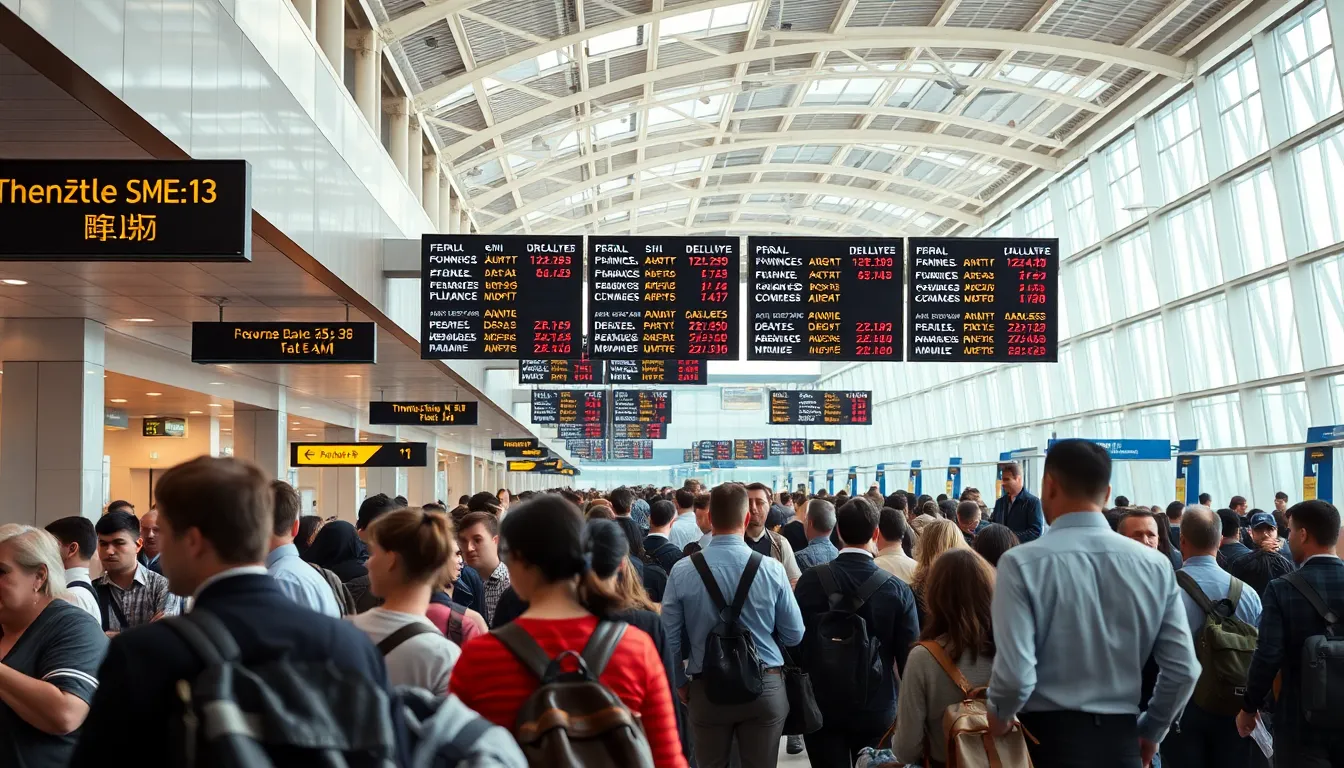In the world of air travel, timing is everything. Picture this: you’re at the airport, coffee in hand, ready to jet off to your next adventure. Suddenly, you hear the dreaded announcement about departure time fight SD1555958A. It’s enough to make even the most seasoned traveler break into a cold sweat. But what if this chaotic situation could actually be a blessing in disguise?
Table of Contents
ToggleOverview of Departure Time Fight SD1555958A
Flight SD1555958A represents a critical scenario in air travel where departure timing plays a significant role. Understanding the factors surrounding this case can alleviate some stress for travelers.
Background of the Case
Departure time issues often arise in air travel, particularly for flight SD1555958A. Original schedules faced disruptions due to weather conditions, technical difficulties, or operational delays. These circumstances not only impact the airline but also influence passengers’ plans. Data indicates that awareness of potential delays enhances traveler preparedness. The case serves as a reminder of the complexities involved in maintaining a reliable flight schedule.
Key Players Involved
Several entities play vital roles in the unfolding of flight SD1555958A. Airlines, ground crews, and air traffic controllers coordinate efforts to ensure safe departures. Additionally, passengers, including frequent and first-time flyers, contribute perspectives on the travel experience. Each group faces unique challenges and expectations. Communication among these players remains essential for managing delays effectively. Airlines often provide updates to keep passengers informed, highlighting the importance of transparency in enhancing customer satisfaction.
Details of the Incident

Flight SD1555958A faced significant challenges that impacted its departure time. Understanding the specifics surrounding the flight offers insights into the situation.
Description of the Flight
Flight SD1555958A, operated by a prominent airline, encountered unexpected delays. Passengers experienced heightened anxiety due to the uncertainty of the departure timeline. Notifications regarding technical difficulties and weather conditions contributed to this confusion. The airline provided real-time updates to passengers seeking clarity. Ground crews worked diligently to address issues as they arose, while air traffic controllers coordinated flight schedules in a complex environment. Efforts to manage the situation involved constant communication among all parties involved.
Location and Context
The incident occurred at a major international airport known for high traffic volume. Weather conditions significantly influenced operations that day, leading to further delays. Runway conditions remained a critical factor, compelling air traffic control to prioritize safety. Multiple flights faced similar hurdles at the same airport, impacting overall travel plans. Terminal facilities experienced congestion as passengers awaited developments regarding their flights. The chaotic environment heightened the tension among travelers, emphasizing the need for efficient communication and swift responses.
Legal Implications
Understanding the legal implications surrounding flight SD1555958A is important for all parties involved. Various issues can arise from delays, affecting not just passengers but also airlines and ground staff.
Charges Filed
Passengers may file complaints based on consumer protection laws. Airlines can face legal action if they fail to provide timely notifications about delays. Evidence of negligence might lead to formal charges against the airline in severe cases. Courts can evaluate the situation based on circumstances, such as weather and technical difficulties. Data shows that airlines often settle claims to avoid prolonged legal disputes, providing compensation to aggrieved customers.
Potential Consequences
Delays can lead to significant financial repercussions for airlines. Increased operating costs arise from the need to accommodate stranded passengers and maintain aircraft. Legal action may result in substantial penalties and damages awarded to plaintiffs. Airlines risk reputational damage that can affect ticket sales and customer loyalty. Awareness of these consequences encourages airlines to prioritize effective communication and proactive measures in managing flight operations.
Public Reactions
Responses to the delays of flight SD1555958A sparked considerable discussion among the public. Observations highlight the ongoing concerns related to flight scheduling and the impact of operational challenges on travel experiences.
Media Coverage
Various news outlets reported extensively on the incident involving flight SD1555958A. Journalists focused on the reaction from passengers, capturing their anxiety amid the uncertainty. Articles illustrated the operational complications faced by airlines, especially during peak travel times. TV segments featured interviews with airport staff and passengers, showcasing perspectives on how operational delays affect travel plans. Social media platforms amplified voices from the public, leading to viral posts demanding better communication from airlines. Reports emphasized the importance of transparency in managing expectations and the need for improved systems to handle flight disruptions effectively.
Community Response
Local communities expressed empathy towards passengers experiencing delays with flight SD1555958A. Organizations and travel groups shared useful resources on social media, helping travelers navigate their schedules. Many individuals offered support, sharing their own stories of delays and frustrations. Public forums filled with discussions about customer rights and how to handle unresolved issues. Travelers called for enhanced accountability from airlines to ensure timely notifications about flight disruptions. Collaboration among community members fostered a sense of togetherness, highlighting the shared challenges faced during air travel.
Flight SD1555958A serves as a reminder of the complexities involved in air travel. Delays can cause significant stress for passengers but also highlight the importance of effective communication and operational efficiency among airlines and ground crews. As travelers face unexpected challenges, awareness of their rights and available resources becomes crucial.
The ongoing dialogue surrounding this flight emphasizes the need for airlines to prioritize transparency and accountability. By addressing these issues, the industry can enhance the overall travel experience and foster a more supportive environment for all passengers. Understanding the dynamics of flight operations not only prepares travelers for potential disruptions but also encourages a collaborative approach to managing air travel’s inherent uncertainties.





